Creating Animated NFTs: A Complete Guide for Artists
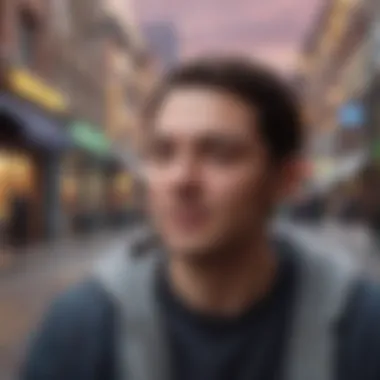

Intro
In the ever-evolving world of digital art and collectibles, animated non-fungible tokens (NFTs) have carved out a significant niche. These dynamic pieces aren't just static images; they capture the fluidity of imagination and creativity, bringing artworks to life on the blockchain. As artists and investors alike seek to tap into this booming market, understanding the fundamentals of animated NFTs becomes crucial.
This article aims to provide a comprehensive overview of the processes involved in creating these unique digital assets. From the technicalities of animation to the platforms that facilitate NFT creation, it covers the spectrum of considerations for both seasoned artists and newcomers looking to make their mark in the digital art scene.
With the right tools at hand and a clear vision in mind, individuals can navigate the nuances of this competitive landscape, ultimately carving out a space for their artistic expressions. Furthermore, this journey into animated NFTs also opens a dialogue about digital ownership, a topic that is becoming more relevant as technology advances. Let's delve deeper into the foundational terms and concepts that set the stage for this vibrant marketplace.
Preamble to Animated NFTs
The realm of animated NFTs is rapidly becoming a focal point for creators and collectors alike. As the digital landscape continues to evolve, understanding animated non-fungible tokens is crucial. This section sets the stage, offering insights into what defines animated NFTs and why they matter in today's digital art scenario. By exploring the significance of this medium, readers can appreciate the innovative blend of art and technology that animated NFTs represent.
Defining Non-Fungible Tokens
Non-fungible tokens, or NFTs for short, are unique digital assets recorded on a blockchain. Unlike traditional currencies, which are interchangeable, each NFT carries distinct information and value. This distinctness creates scarcity, akin to owning a one-of-a-kind painting.
In the context of animated NFTs, these tokens encapsulate actual animations, making them both a collectible and a representation of digital ownership. Whether it's a short clip that captures an emotion or a complex sequence that tells a story, these animated forms bring a lively essence to the often static world of NFTs. The value attaches not just to the animation itself, but also to the artist's brand, the rarity of the piece, and the community that supports it.
The Role of Animation in Digital Art
Animation injects vitality into digital art, breathing life into otherwise lifeless images. This movement can communicate nuances that a static piece often cannot. Think of a serene landscape transforming from day to night or a character emotively changing expressions.
In today’s digital art world, listeners and viewers are increasingly drawn to vibrant, engaging content. Animated NFTs cater to this demand and create an immersive experience for collectors. By utilizing motion, color, and sound, artists can forge deeper connections with their audience, resulting in richer storytelling.
"Animation is not the product of technology, but the technology is a tool for artists to express their creativity."
While there are many forms of digital art, the addition of animation opens new avenues of expression. As creators delve into the art of animation, they blend imagination with technology, paving the way for innovative storytelling, which is large missing in traditional formats.
In summary, understanding animated NFTs begins with recognizing what makes them unique—offering artisans a captivating platform while also creating a more dynamic experience for potential buyers. As we explore further, we’ll delve into the technical underpinnings and the significant role this art form plays in the digital economy.
Understanding the Technical Foundations
Understanding the technical foundations of animated NFTs is crucial for anyone looking to navigate this burgeoning field. It’s not just about slapping some graphics on a platform and hoping for the best. The essentials here lay the groundwork for how your artwork is perceived, traded, and valued in the digital age.
By grasping these elements, you empower yourself to create and promote your digital art effectively. This knowledge sets you apart from the pack, resulting in offerings that are not only artistically compelling but also technically sound.
Blockchain Technology Basics
Blockchain technology is the backbone of NFTs. At its core, it operates as a decentralized ledger, which means no single entity controls it. This attribute lends transparency, security, and trust. Every transaction is recorded on this ledger permanently, ensuring that ownership history is traceable and public, which greatly minimizes fraud.
Here are some key points to consider:
- Security: Each entry is cryptographically secured, making it extremely hard to alter any record without consensus from the network.
- Decentralization: Since it is a distributed system, it reduces the risk of central points of failure, a common concern in traditional database models.
- Transparency: Anyone can verify a transaction, making all dealings clear and ensuring that the provenance of the digital asset is visible.
The robustness of blockchain technology makes it indispensable in the realm of NFTs. For artists, this means they can confidently sell their animated works knowing their rights are protected and their creations can't just be copied or altered by someone else without permission.
Smart Contracts: How They Work
Smart contracts are the tools that make NFTs more than just files uploaded to the internet. Think of them like self-executing contracts with the terms of the agreement directly written into code. They run on blockchain networks and automatically enforce and execute the terms once predetermined conditions are met.
Consider these aspects when you think about smart contracts:
- Automation: These contracts operate independently, meaning once they are set in motion, minimal human intervention is needed. This can significantly speed up transactions.
- Customization: As an NFT creator, you can embed various rules and royalties within the contract. For example, if someone sells your animated NFT in the future, you could set it so you earn a percentage of that sale.
- Trustlessness: No need for intermediaries. You can trade or sell directly with buyers, eliminating the costs and potential delays associated with traditional auction houses or galleries.
"Smart contracts enable artists to take control of their creations, ensuring they get the benefits rightfully due to them."
In a world where digital assets are gaining momentum, understanding smart contracts allows creators to leverage technologies in a way that best supports their artistic intentions, while also securing their financial future.
By thoroughly understanding the technical aspects of blockchain and smart contracts, artists can not only create stunning animated NFTs but also navigate the complexities of the marketplace and legal considerations, maximizing their impact and revenue in an increasingly competitive landscape.
Essential Tools for Creating Animated NFTs
When it comes to crafting animated NFTs, having the right tools at your fingertips can make all the difference. The digital art space, especially with NFTs on the horizon, calls for high-quality, robust software that can turn your artistic visions into reality. These tools not only empower you to streamline your creative process but also ensure that the final product resonates with the audience. In this section, we'll explore both the software used for animation and the marketplaces where your animated masterpieces can find a home.
Software for Animation
Adobe After Effects
Adobe After Effects is a cornerstone in the world of animation and motion graphics. One key aspect that sets it apart is its extensive toolkit designed specifically for designing and animating visual effects. The versatility of Adobe After Effects lies in its ability to seamlessly integrate with other Adobe Suite products, like Photoshop and Illustrator. This makes it especially appealing for artists who already use these programs.

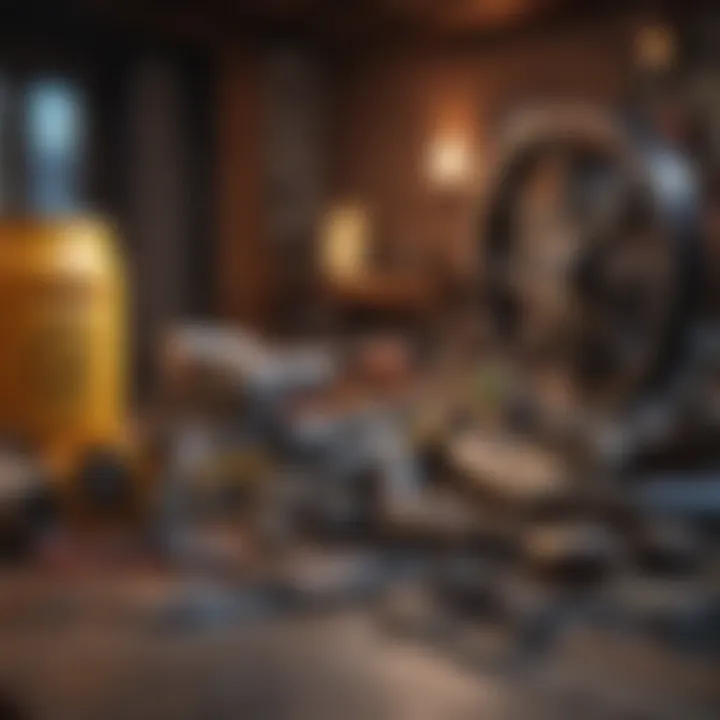
The standout feature of After Effects is its layer-based system. This allows creators to manipulate individual elements independently, leading to a polished and professional look in animations. However, it's essential to note that the learning curve can be steep, especially for beginners.
The simplicity in creating intricate animations, combined with the extensive community resources available online, makes Adobe After Effects a popular choice for this article's audience.
Blender
Blender brings a unique flavor to animated NFT creation, being both open-source and free to use. What makes Blender particularly noteworthy is its professional-grade 3D modeling, rendering, and animation capabilities. The software shines when creators aim to delve into more complex animated works, offering a powerful set of tools for visualizing and customizing 3D objects.
One notable characteristic is its real-time rendering engine, which allows artists to preview their animations as they work. This feature not only saves time but also enhances creative exploration. However, given its complexity, users might find themselves needing to invest time in tutorials to fully grasp its potential, which could be a hurdle.
For those ambitious creators looking to push boundaries, Blender is a solid choice that can yield impressive results.
Procreate
Procreate takes a different approach, focusing on the ease of use and intuitive design catered to mobile devices. This app has gained a significant following among artists due to its ease of use and adaptability for both animation and illustration. Its frame-by-frame animation feature is particularly useful for artists who prefer traditional animation techniques.
Procreate shines with its fluid brush capabilities allowing for detailed and expressive illustrations. Furthermore, its portability means artists can sketch and animate virtually anywhere—ideal for those on the go. On the downside, Procreate currently lacks some of the high-end features found in desktop software, which can limit more ambitious projects.
For artists looking to create more straightforward animated NFTs while enjoying the freedom of working on an iPad, Procreate could be the go-to solution.
NFT Marketplaces Overview
Once your animated work is ready, the next step involves figuring out where to sell it. Completely understanding various marketplaces is crucial, as they each cater to different niches and audiences.
OpenSea
OpenSea stands out due to its sheer size, operating as one of the largest NFT marketplaces today. A key aspect of OpenSea is the transparent accessibility it offers both buyers and sellers. With a user-friendly interface, artists can easily set up their portfolios and start selling their animated NFTs without facing the hurdles of a complicated onboarding process.
One noteworthy feature is its multi-chain support, allowing artists to mint NFTs across several blockchains. While this expands opportunities, potential sellers should consider the fees associated with each chain, as this can vary widely depending on market conditions.
Rarible
Rarible offers a unique community-driven approach to NFT creation. Here, creators can not only sell their animations but also participate in the governance of the platform via its native token, RARI. The platform emphasizes the idea of fostering community, making it a strong choice for artists looking to connect and engage.
The highlight of Rarible is its customizable royalties, allowing creators to earn ongoing profits from secondary sales—a terrific incentive in the vibrant NFT market. However, the downside might be that the platform's popularity can sometimes lead to overwhelming competition.
Foundation
Foundation serves as a curated marketplace focusing on high-quality, artistic NFTs. This exclusive approach creates a sense of prestige, attracting collectors who prioritize unique and culturally significant pieces. The application process to join as a creator often ensures that the platform is filled with talented individuals.
An important aspect is the community-based approach, where established artists can invite new creators to the platform. This means the quality of artwork is generally high, but the entry barrier can be a disadvantage for emerging artists seeking quick access.
Overall, understanding these tools and marketplaces not only equips creators with the necessary resources but also empowers them to navigate the fascinating world of animated NFTs effectively.
Developing Your Artistic Concept
Creating an animated NFT isn’t just about technical artistry; it’s equally anchored in developing a compelling artistic concept. Without a clear vision, your work risks floating adrift amid the vast ocean of digital creations. The journey begins with understanding what message or feeling you want to convey. This purpose isn't merely decorative; it shapes every aspect of your animation.
A strong concept helps in the story your art tells, appealing to your target audience and enhancing their connection to the piece. Picking the right theme can distinguish your work in a crowded marketplace, making it memorable among potential buyers. Moreover, having a well-thought-out idea can streamline the entire creative process, allowing for efficient execution. Your artistic concept is the backbone of your NFT, guiding decisions from animation style to color palette.
Finding Inspiration for Animated Art
Inspiration can strike like lightning, but often, it needs a little nudge from the right sources. As an artist, tapping into diverse avenues can fuel your creativity. Observing nature, browsing through online galleries, or even connecting with other artists on platforms like Reddit can spark new ideas. While your unique perspective is crucial, drawing from a variety of influences can enrich your animation.
Here are some areas to explore for inspiration:
- Visual Culture: Art movements, graphic novels, or cinema can provide thematic and stylistic cues.
- Personal Experiences: Infusing your own life stories into your art can create deeper, relatable narratives.
- Social Issues: Addressing current events or societal themes can make your work resonate on a broader level.
Compiling mood boards can help keep your focus, collecting snippets of color, texture, and design that align with your evolving ideas. Digital platforms enable you to save images and notes swiftly, serving them as reference points.
Storyboarding Your Animation
Once inspiration bubbles to the surface, the next step is storyboarding. This process is like charting a course before setting sail; it defines how your animated tale unfolds. A storyboard maps out key scenes and transitions, ensuring your animation flows logically and captivatingly.
Creating a storyboard typically involves:
- Sketching Key Frames: Outline sequences graphically, which helps visualize timing and movement.
- Defining Scene Composition: Focus on how elements interact within the frame and what emotions they convey.
- Planning Transition Effects: Think about how to shift from one scene to another — whether it’s a fade, zoom, or something more elaborate.
An effective storyboard also accommodates feedback. Whether it’s a chat with a fellow artist or input from a potential collector, flexibility in your drafts can deepen your project.
"A good storyboard is the blueprint of your animation; it’s where ideas start taking tangible form."
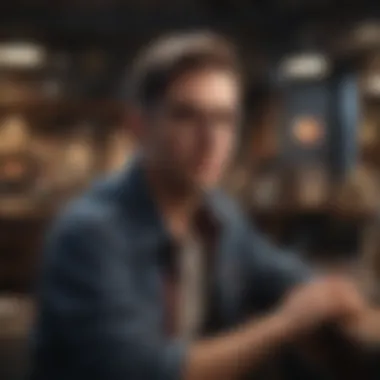
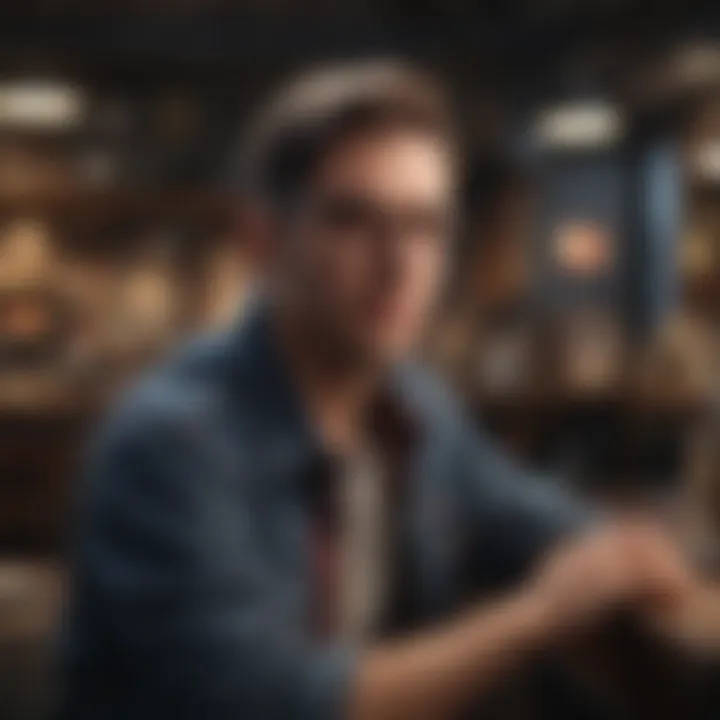
Creating Your Animation
The journey of crafting animated NFTs begins with the animation itself. This stage is where the magic happens—transforming static ideas into dynamic visuals that can captivate an audience. Whether you’re a seasoned animator or a budding enthusiast, understanding the techniques and processes involved goes a long way in ensuring your artwork not only stands out but also resonates with potential buyers.
Animation is not just about movement; it’s about storytelling. Each frame can convey emotion and narrative, inviting viewers into the world you’ve created. It’s essential to pay attention to pacing and timing, as these elements can make or break the flow of your animation. The smoother your animation, the more engrossing the viewing experience. With advancements in technology and software tools, you can create stunning animations that reflect your artistic vision. The more fluid the transitions, the better the engagement.
Techniques for Smooth Animation
Achieving a seamless animation requires a blend of techniques and thoughtful planning. Here are some valuable strategies to consider:
- Keyframing: This is the backbone of most animation work. By setting key frames, you mark the start and end of any motion. Afterward, the software will interpolate the frames in between, providing smooth transitions. Understanding easing—making movements start slow, speed up, and then slow down again—can greatly enhance the realism of your animation.
- Squash and Stretch: This principle adds a feeling of weight and volume to your animation. Characters or objects that squash when hitting the ground and stretch when jumping add character and life. This technique can also communicate emotions effectively.
- Frame Rate: The number of frames displayed in a second heavily influences the smoothness of your animation. A higher frame rate results in fluid motion, while lower rates may create a jerky effect. It’s crucial to find a frame rate that works best for your specific project and audience.
- Secondary Action: Adding secondary actions around the main motion enriches the animation. For instance, if a character is walking, adding the slight bounce of the arms or the flick of the hair can create a layered, more convincing animation.
- Animation Cycles: Establishing repetitive movement can significantly streamline the animation process. For instance, you might create a walking cycle that can be reused, saving time and ensuring consistency throughout your project.
By infusing these techniques into your workflow, you’ll be on the path to creating animations that not only captivate viewers but also tell a compelling story.
Rendering Your Final Product
Now that you’ve created your animation, it’s time to render it—a crucial step where your digital artwork is prepared for presentation. The rendering process can be a bit technical, but it’s essential for ensuring your animated NFT appears as intended when viewed by others. Here’s how you can approach it:
- Select the Right Format: Choose a file format that aligns with the marketplace standards. Common formats include .MP4 and .GIF, but .GLB or .WEBP may also be suitable for interactive or 3D assets. Each format carries its own pros and cons, so take the time to research which one is ideal for your work.
- Resolution Settings: Higher resolutions offer clearer, higher-quality visuals, but they also require more processing power. Understanding the balance between quality and file size is key, particularly for NFT platforms that may have upload limits.
- Adequate Compression: While you want your animation to look good, it shouldn't be unnecessarily large. Compress the final product without sacrificing too much quality—tools like HandBrake can assist in optimizing file sizes while maintaining visual integrity.
- Test the Rendering: Before finalizing your work, test the rendered product on various devices. Ensure it appears consistently on computer screens, mobile devices, and tablets. This attention to detail will help in portraying professionalism and care.
- Backup Your Files: It's always wise to create backups of your original files. Accidents happen, and having a fallback can save you from losing hours of work.
Rendering your animation is as important as the animation itself. It's the final polish that shapes the viewer's first impression. By paying attention to the output quality and format, you can ensure that your animated NFT shines in a competitive marketplace.
Creating a high-quality animation requires not only skill but also a keen eye for detail. Every element counts—from the subtle eases in motion to final file quality.
Minting Your Animated NFT
Minting your animated NFT is a crucial step in the journey of creating digital art. Think of it as the point where your artistic creation gets an identity of its own, becoming a one-of-a-kind asset on the blockchain. This process not only makes your work verifiable and tradable but also establishes ownership in the rapidly expanding digital marketplace. Many creators often overlook this part, thinking that animating and designing is enough. However, minting is where the magic really happens. Here, it’s essential to understand how this process works, the various blockchain options available, and the intricate steps involved in bringing your animated masterpiece to life.
Choosing the Right Blockchain
The blockchain you select for minting your NFT can greatly affect the potential success and reach of your animated art. With several options available, it can be a bit overwhelming. Let’s delve into three prominent blockchains and their unique offerings:
Ethereum
Ethereum is like the heavyweight champion of the NFT ring. Often recognized for its strong community and extensive network, Ethereum has become synonymous with NFTs. The key characteristic of Ethereum is its robust smart contract functionality. This allows creators to include specific rules in their NFTs regarding royalties and ownership transfer.
One unique feature is its ERC-721 standard for NFTs, which has set the groundwork for many successful projects. However, it does have its downsides. High gas fees during peak network usage can be prohibitive for some artists. Still, the potential audience and marketplace on Ethereum are hard to ignore, making it a compelling choice for minting.
Tezos
Tezos offers an interesting alternative to Ethereum. Known for being energy-efficient, Tezos utilizes a proof-of-stake mechanism, which attracts environmentally-conscious creators. One of the standout features of Tezos is its self-amending blockchain, which allows it to evolve without requiring hard forks. This ensures long-term stability and adaptability.
Tezos has a smaller but growing community compared to Ethereum. It typically has lower transaction fees, which is appealing for creators minting their first NFT. However, the marketplace visibility may not be at par with Ethereum. For some artists, the trade-off between lower fees and exposure is worthwhile.
Flow
Flow is another player in the NFT space, designed specifically for digital collectibles and large-scale applications. One key aspect of Flow is its user-friendly design, making it accessible for both creators and buyers. With no gas fees for transactions, it opens the door for wider participation, particularly among new artists.
Flow’s unique feature is its multi-role architecture, which allows the network to scale efficiently. This means that artists can mint NFTs without worrying too much about network congestion, unlike Ethereum. However, Flow’s ecosystem is still maturing, and creators might find fewer marketplaces compared to Ethereum or Tezos. Still, it presents an enticing option for creators looking to explore fresh possibilities.
Step-by-Step Minting Process
Once you've chosen the right blockchain to mint your animated NFT, the next step involves the actual process:
- Connect Your Wallet: Choose a digital wallet compatible with your selected blockchain and connect it to the NFT marketplace.
- Upload Your Animation: Follow the platform’s upload guidelines for your animated art. Ensure that the file meets size and format specifications.
- Add Metadata: Provide essential details like title, description, and any special instructions for buyers. This helps potential collectors understand the value and story behind your work.
- Set Royalty Preferences: If applicable, define your royalty options. This is significant for ensuring you earn from future resales.
- Confirm and Mint: Review all submitted information and confirm the minting transaction. Depending on the blockchain, you may have to pay transaction fees.
"Minting is the gateway to transforming your animated art into a digital asset on the blockchain."
By following these steps, you’ll ensure that your animated NFT not only sees the light of day but also has the best chance to thrive in a competitive marketplace.
Marketing Your Animated NFT
In the digital realm where artists and creators are exploring unprecedented ways to showcase their work, marketing your animated NFT is a crucial step in not just gaining visibility but also ensuring its success in a crowded marketplace. Animated NFTs have unique characteristics that set them apart; they are not just digital images, but rather they encapsulate stories, emotions, and creativity brought to life through movement. However, with the rapid rise in popularity of NFTs, it’s vital to have a strong marketing strategy that can effectively communicate the value of your work.
Building a Social Media Presence
Creating an engaging social media presence is like setting up a digital storefront for your animated NFTs. It’s where potential buyers will first encounter your art. Platforms such as Instagram, Twitter, and TikTok lend themselves incredibly well to showcasing animated content. Here are some strategies to consider:
- Share Behind-the-Scenes Content: Posting short clips of your animation process can humanize your brand and engage viewers. People love to see how things are made, and it builds a connection between you and your audience.
- Utilize Hashtags Strategically: It’s not just about blindingly throwing hashtags in the hopes of luck; focus on trending ones specific to NFTs, digital art, or animations. Nature doesn’t rush, and neither should you. Researching this can actually reap long-term rewards.
- Engage with Your Audience: Responding to comments, participating in discussions, or even creating polls can heighten interaction. It turns a one-way street into a community hub. Let’s be honest; who wants to talk to a wall?
- Regular Posting Schedule: Consistency plays a role here. If you share content regularly, your audience has something to look forward to. It’s like watering a plant; the more attention it gets, the better it grows.
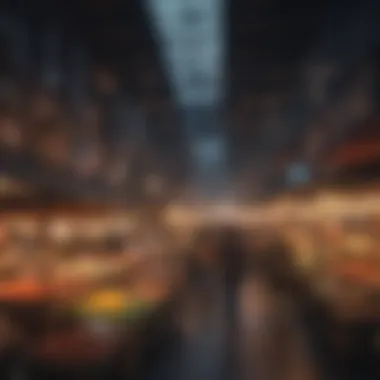
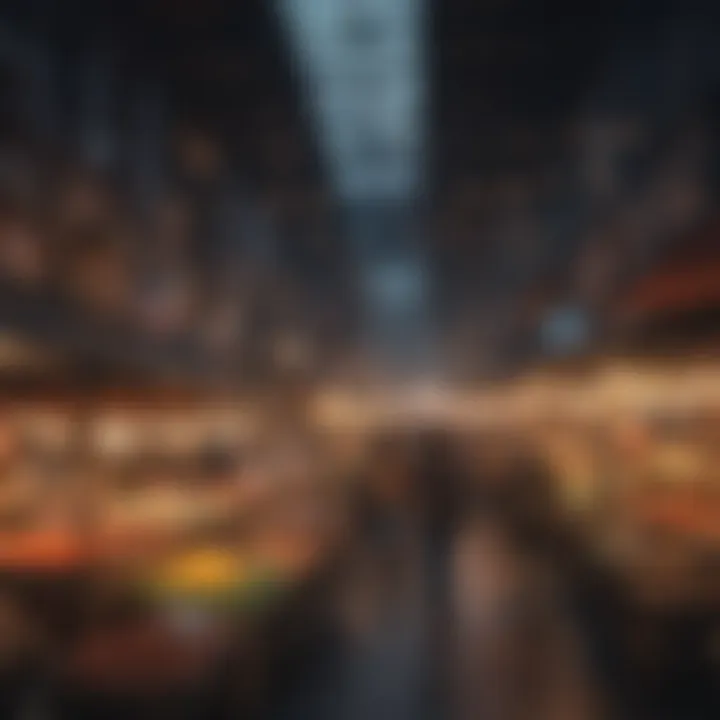
In this era, having a dynamic social media footprint can turn curious onlookers into buyers who feel a connection to both you and your work.
Utilizing NFT Communities and Platforms
The NFT space thrives on community. Engaging with other artists, collectors, and enthusiasts is not just beneficial; it’s essential. Here are a few strategies to attract attention in various NFT communities:
- Participate in Forums and Discussion Groups: Platforms like Reddit and Discord host thriving NFT communities where discussions around art, technology, and market trends flourish. You can share your work, gain feedback, and find potential buyers. But remember, don’t just take; contribute value too.
- Join Relevant Platforms for Artists: Websites like OpenSea or Rarible are not just marketplaces; they also have community features. Regularly interacting on these platforms can elevate your visibility while helping you stay abreast of current market demands and trends.
- Cross-Promotion with Other Artists: Networking with fellow creators can open up avenues for collaboration. This could be in the form of joint promotions, feature swaps, or group exhibitions online. Think of it as pooling resources; everyone can benefit from shared audiences.
- Leverage Launch Events and Contests: Hosting events, giveaways, or contests can create buzz around your animated NFTs. It’s a great way to engage your community while inviting potential buyers to discover your work.
"In the end, marketing your animated NFTs isn’t just about selling art; it’s about building relationships and creating a loyal following that will appreciate your craft for years to come."
By weaving marketing into every stage of your NFT creation journey, from creation to distribution, you pave the way for sustainable success while making a name for yourself in this dynamic landscape.
Monetization Strategies for Animated NFTs
In the world of animated non-fungible tokens (NFTs), knowing how to monetize your creations is paramount. Artists and creators must think beyond simply selling a digital piece; there are various methods to earn from animated NFTs that can significantly impact profitability. The considerations around monetization are not just financial; they cover audience engagement, brand-building, and long-term sustainability in a rapidly evolving market.
The landscape of animated NFTs is not just about artistry and technical skills; it’s also an arena where economic savvy plays a crucial role. As the supply of digital art continues to swell, understanding how to carve out a niche and set lucrative pricing is essential for any creator. Let’s break down the key components of this topic.
Understanding Pricing Models
Setting the right price is often a tricky endeavor for NFT creators, especially within the animated realm. The dynamic nature of digital art means that there are several models to consider:
- Fixed Pricing: This is straightforward—an artist sets a specific price for each piece. This method works best for works that are seen as high demand or when the artist has established a brand.
- Auction Format: Platforms like OpenSea or Rarible allow creators to set starting bids and let buyers compete for ownership. This can potentially lead to higher sales, especially if the piece garners significant interest.
- Royalty Structures: Some NFTs include a royalty percentage every time the piece is resold. This could mean continual income for the creator, adding long-term financial benefits.
- Bundling: Offering a series of NFTs or exclusive perks, like behind-the-scenes access or rights to use the artwork commercially, can justify a higher price point and make the overall package more appealing.
Ultimately, the chosen model should align with a creator's brand identity and long-term goals. Assessing the market demand, and considering factors like artistic value, uniqueness, and the emotional connection respondents feel toward a piece, can guide more informed pricing decisions.
Exploring Secondary Market Opportunities
The secondary market for animated NFTs is a fascinating space, representing both challenges and new pathways for monetization. When someone resells your NFT, there are different layers to consider:
- Resale Value: It's not just your original sale that counts; what your work sells for in the future matters too. Monitoring trends and anticipating demand can influence your initial pricing and future sales strategies.
- Community Engagement: Building a community around your work can incentivize secondary market activity. Engaged fans are likelier to invest in your creations and may even help spread the word, thereby increasing initial demand.
- Exclusivity and Scarcity: The idea of owning a unique or limited edition piece can drive up interest and resale values. Use this to your advantage by offering unique content that can't be found elsewhere.
- Strategic Partnerships: Collaborating with other artists or brands can elevate your visibility. Cross-promotion can introduce your work to a wider audience, leading to increased activity in secondary markets.
As the market for animated NFTs continues to expand, staying on top of both current trends and community preferences can yield better returns over time.
"Understanding how to navigate the nuances of pricing and secondary market dynamics is essential for artists aiming to thrive in the digital economy."
In short, monetizing animated NFTs requires a blend of creativity and strategic planning. By focusing on distinct pricing models and engaging with secondary market opportunities, creators can create a sustainable income stream while contributing to the vibrant landscape of digital art.
Legal and Ethical Considerations
The creation and sale of animated NFTs do not take place in a vacuum; they exist within a complex web of legal frameworks and ethical expectations. As digital art moves into the realm of non-fungible tokens, understanding these considerations becomes critical not only for creators but also for buyers. The landscape is still developing, and clarity on rights and responsibilities ensures a smoother journey in this emerging market.
Copyright and Intellectual Property Rights
Copyright is central to the world of digital art, impacting how animated NFTs are created, sold, and distributed. When an artist creates an animation, they typically hold the copyright to that piece, which gives them exclusive rights to use, share, or sell it. However, confusion often arises with how these rights translate to NFTs.
- Ownership vs. Copyright
Purchasing an NFT does not automatically confer the copyright of the artwork—it only grants ownership of a unique digital token linked to the piece. Creators must clearly state what rights the buyer does receive, such as the ability to display the art or use it for personal enjoyment, to avoid misunderstandings. - Licensing Agreements
Some artists opt to add terms of use, licensing agreements, or copyright limitations directly within the smart contract associated with their NFT. This approach clarifies what the buyer can and cannot do with the animated art. - Plagiarism and Royalties
As with traditional art, plagiarism is a significant concern. If an artist uses elements from other creators without permission, they risk legal action. Moreover, implementing royalties ensures that original creators receive a percentage of resale prices whenever their NFT is resold, safeguarding their ongoing interests.
It's pivotal for artists and buyers to pay close attention to copyright laws and ensure that any agreements are transparent and legally binding to avoid potential pitfalls.
Navigating Environmental Concerns
The environmental impact of blockchain technology, particularly in terms of energy consumption and carbon footprints, is a hotly debated topic. Many transactions, especially those using the Ethereum blockchain, require substantial energy. This concern has led to questions about the ethical implications of creating and trading animated NFTs.
- Energy Consumption
Traditional proof-of-work systems consume vast amounts of electricity. Artists and buyers are becoming increasingly aware of this issue, with some choosing to engage primarily with networks that utilize proof-of-stake mechanisms, which are typically more energy-efficient. - Offsetting Carbon Footprint
Many creators are taking proactive steps to address their impact on the environment. Some organizations, like Art for the Earth, encourage artists to contribute a portion of their sales to environmental causes or purchase carbon offsets to mitigate their digital footprint. This practice aligns ethical considerations with creative output. - Community Awareness
Discussions within NFT communities often touch on sustainability, urging artists and buyers alike to consider their environmental impact when minting or purchasing animated NFTs. This awareness fosters a communal responsibility, pushing for innovation and change in how digital art is created and sold.
Future Trends in Animated NFTs
As we peer into the future of animated non-fungible tokens (NFTs), it becomes eminently clear that this niche is not just a fleeting trend but a potent forecaster of changes to come in the intersection of art and technology. The animated NFT space is expanding its canvas, giving rise to innovative technological breakthroughs and cultural shifts that are worth contemplating.
Technological Innovations
The backbone of animated NFTs is technology, and it’s evolving at a breakneck pace. Several key innovations stand out:
- Improved Rendering Techniques: Tools like Unity and Unreal Engine are advancing quickly, making it easier to create high-fidelity animations that can be rendered more swiftly. This not only enhances the quality of animated NFTs but also reduces production time and costs for creators.
- Augmented Reality (AR) and Virtual Reality (VR) Integration: With the rise of augmented and virtual realities, animated NFTs can find new life in immersive environments. Imagine an art gallery in the metaverse where animated NFTs leap off the walls and engage viewers in a three-dimensional context. This provides artists with new modes of expression, extending their reach far beyond traditional platforms.
- Interactive NFTs: A significant shift is happening with the introduction of interactivity in NFTs. Instead of a static display, future animated NFTs could involve user interaction. A buyer could influence the animation based on their choices, creating a unique experience for each viewer.
"In the coming years, the blending of technology with creativity in the NFT space will define how art is consumed, experienced, and valued."
Through these advancements, creators are not just keeping the wheels turning; they are redefining the very essence of what art can be in a digital landscape.
Cultural Impact of Animated NFTs
The cultural resonance of animated NFTs is profound, influencing how we perceive ownership and creativity. Several aspects come into play:
- Redefining Ownership: In a world where everything is increasingly digitized, animated NFTs are pioneering a new model of ownership. Owning an NFT can mean having a stake in the original work, a concept that’s reshaping how we think about collecting art.
- Community Building: Animated NFTs serve as a catalyst for community. Artists and collectors alike form tight-knit groups, often meeting on platforms like Discord or Reddit. Such communities foster collaboration and innovation, providing a space where ideas can freely flow and grow, contributing to a collective cultural tapestry.
- Legacy and Storytelling: The storytelling potential inherent in animated formats encourages artists to craft narratives that resonate with diverse audiences. This trend underscores the importance of not only the art itself but also the tales that accompany it, enriching the cultural landscape.
The ongoing evolution of animated NFTs holds strong implications for creators, collectors, and the art world overall. As both technology and cultural narratives continue to intertwine, we can expect animated NFTs to foster an unprecedented dialogue about art, ownership, and community in the years ahead.















